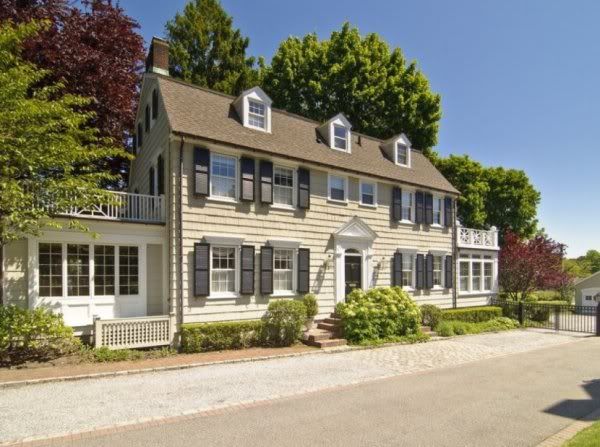Some of you have seen the “Amityville Horror” and instantly think of it as the story of a haunted house. I never believed it, but I’ve always been drawn to the murders that started the whole thing off.
This week marks the 40th anniversary of the murders, in which Ronald “Butch” DeFeo was convicted of killing his parents, two brothers and two sisters. I’ve always had an interest in it because at its bare core, this is the story of a family so dysfunctional it couldn’t survive.
Filmmaker Ryan Katzenbach is about to release the final installment of his film series about the murders, with a huge focus being on the DeFeo family itself: Who each of them were, what they aspired to and what tore them apart.
Ryan released a video earlier in his project, paying respect to the family that bears sharing here:
Coming from a family with more than a little dysfunction, I always find myself grateful after thinking about this story. Family members will yell at each other, hit each other and stop talking to each other, but in most cases nobody gets shot over it. That’s something to be thankful for.
As for the DeFeo family, below is something I wrote about the case in 2010.
The Amityville Obsession
Part of my obsessive-compulsive behavior includes a study of the more morbid pieces of history. The Manson murders is one example. The Amityville murders is another. Lately, I’ve been obsessed with the latter.
The match for the fire is a book I just read called “The Night The DeFeos Died” by Ric Osuna. The book goes a long way in crushing the bullshit hoax about the house being haunted. I watched “The Amityville Horror” as a kid and it scared the hell out of me. I’ve had an interest ever since.  This book gets into the train wreck that was the DeFeo family. They were outwardly religious and close-knit. But the father was a rage-a-holic who apparently yelled a lot and beat his wife and kids, especially his oldest son Butch, who is now rotting in jail for the murders.
This book gets into the train wreck that was the DeFeo family. They were outwardly religious and close-knit. But the father was a rage-a-holic who apparently yelled a lot and beat his wife and kids, especially his oldest son Butch, who is now rotting in jail for the murders.
The book also reveals that the DeFeo family had mob connections. The toxic mix of dysfunction reached its climax Nov. 13, 1974. After a night of chaos in the house, Butch and his sister Dawn plotted to kill the abusive father and a mother they felt was an enabler.
Somewhere in the chaos, the story goes, Dawn killed their younger siblings. This apparently outraged Butch, who then blew her head off in anger. Investigators later found powder burns on Dawn’s nightgown, suggesting that she had indeed fired a rifle.
The only one who knows the real truth is Butch. But he has proven himself to be a serial liar, so the truth will remain in his head. My impression is that he got an unfair trial and that investigators covered up a lot of things in order to have a slam-dunk case. That’s certainly an argument Osuna makes in the book.
So why the obsession with this story? There are a few things worth noting:
–I don’t romanticize this stuff. The interest isn’t because of the brutal nature of the murders. I’ve seen the crime scene forensic photos for the DeFeo and Manson murders, and they made me sick to my stomach.
–It’s really part of my fascination with history.
Like it or not, this stuff is part of American history. The Manson story is a snapshot of everything that went wrong in the 1960s, where a counterculture born of good intentions — a craving for peace in Vietnam and at home — lost it’s way because there were no rules, no discipline and there was no sobriety. I agree with those who believe the promise of the 1960s died abruptly in the summer of 1969. I’m also fascinated because it shows how easily seemingly stable people can be brainwashed and controlled to the point where they would willingly heed orders to commit the worst of sins.
–The Amityville story is a case study of what happens when the head of a household abuses the rest of the family. Slap a kid around often enough and you just might turn him into the type of man who shoots heroin and plots the murder of some or all of his family.
 It’s the whole cause-and-effect thing that keeps my obsession going.
It’s the whole cause-and-effect thing that keeps my obsession going.
My own experiences have given me an obsession with the key moments in a person’s life that determine if that person will turn to evil or come out of the adversity stronger and better.
I’m lucky because I’m a case study in the latter category. But I can’t help but feel bad for those who go the wrong way.
Some of the twists and turns are so random.
In the case of the Amityville murders, I don’t believe for a second that the house is haunted. Several families have lived there happily over the last 30 years. Sure, a couple of the future residents had bad things happen to them. But bad things happen to everyone.
You don’t need a haunted house to give your life ups and downs.
Sometimes, all it takes are the ghosts in your head.
Addendum, Nov. 14, 2011:
I recently came across photos of what the house looks like now. It really is a beautiful place. More recent owners have put a lot of work into the house, and it’s bright and cheerful decor almost make you forget what happened there.













Fairly unrelated to the content of your post, but had to mention: The second before I clicked on your tweet leading here, I had just finished searching the obits and other records for someone on Ancestry.com who is looking for info on her great Aunts who lived and passed away in Amityville.
Excellent. I agree.
I LIKE the way you thin k. I just saw on a 2 hr TV documentary /interview style program ( …I believe on the History Chanel too) discussing The book you mentioned. I too have been fascinated with the Defoes story.
Agreed, it is actually a charming house but how could anyone live there knowing the horror that took so many family members lives. If it wasn’t haunted then you’d think it HAS to be now!